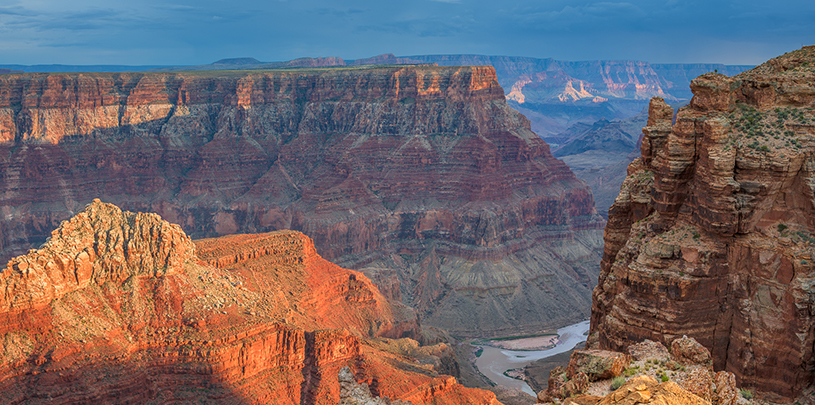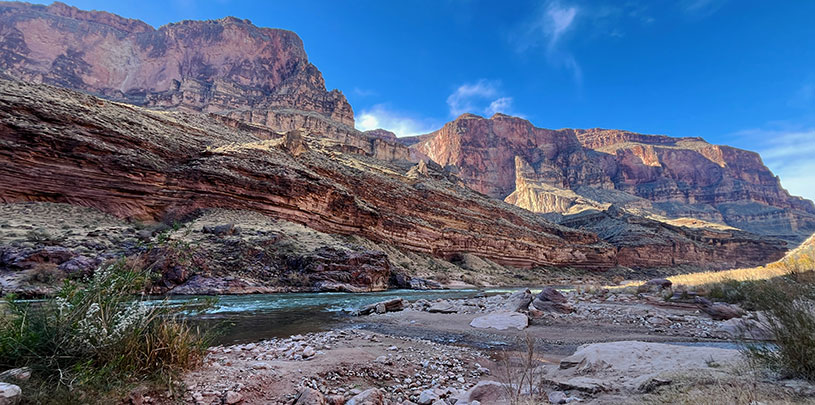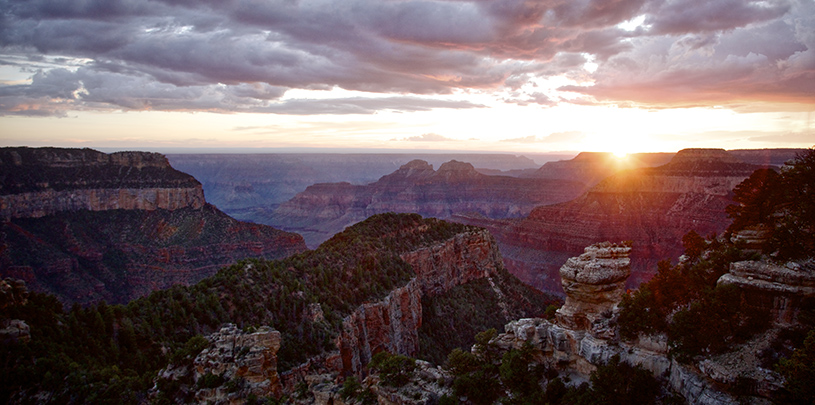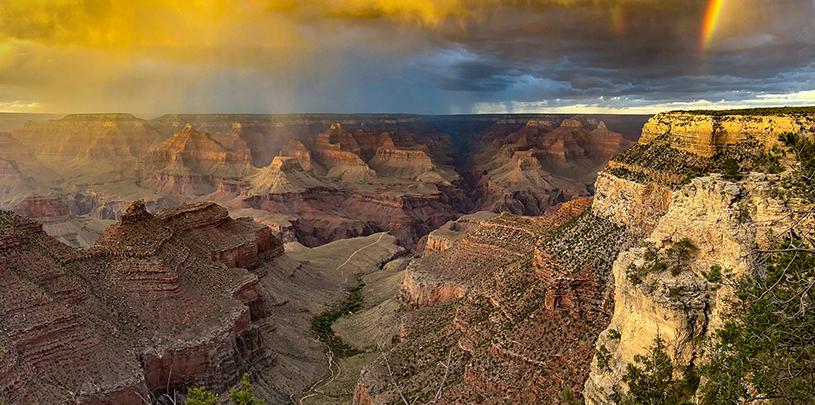
On a clear Saturday a young Navajo archaeologist, a Navajo land owner from the east rim of the Grand Canyon, a local photographer, a journalist, and myself ventured to the Little Colorado River Gorge to inspect, evaluate, and do reconnaissance where two dam projects are proposed.
Once we leave the pavement, it takes us another 30 minutes to travel along a bumpy, dusty, rocky road to get to the rim above the first dam site, located near the Salt Trail, a traditional cultural trail used since time immemorial by many tribes associated with the Grand Canyon. As we step out of the vehicle, we walk quickly to the edge of the canyon and with a sigh of relief we don’t spot any dams materializing yet. For now, they are just proposals. Instead we are reassured to see only a deep canyon carved out over centuries.
It is good to hear the remote quietness of the area. If you listen closely, you can hear the reddish-brown water flowing gently over travertine rocks thousands of feet down, at the base of the canyon. Above the canyon walls, you see Grey Mountain looming over the desert valley, which gradually meets the southern canyon walls of the Grand Canyon. It is hard to imagine from this view that we are so close to the Grand Canyon, west of us.
Two schemes to dam the Little Colorado River
View in full screen (suggested for mobile)
According to applications submitted to the Federal Energy Regulatory Commission, a company named Pumped Hydro Storage LLC is proposing two hydroelectric projects, each with two dams, in this remote gorge. The company aims to build a 1,000-foot-long, 150-foot-high concrete arch dam across the Little Colorado River, just upstream from its confluence with the main stem of the Colorado River. It would create a 250-acre reservoir, while another 1,000-foot-long, 140-foot-high concrete arch dam across the turquoise-blue Little Colorado would create a 150-acre reservoir a few miles farther upstream of the first proposed dam, below where we now stand.
These applications were not authorized by the local tribal communities of the Grand Canyon, even though the proposed dams are on the Navajo reservation, within an area where the Hopi and other tribes all have strong ties. At this stage, the company is applying for preliminary permits to conduct studies and determine the feasibility of the projects before applying for licenses to build them.
Endangering an ancient religious trail
As we walk closer to the dam site, we stop every 100 yards to get cactus and stickers out of our shoes in this rugged desert terrain. We finally see the spot where three tributaries meet below us: Big Canyon, the Little Colorado River, and Salt Canyon. It is unimaginable to envision a dam stopping this reddish-brown water, much less an ancient, historical, religious trail which leads to the Grand Canyon! How can one dam, let alone two, stop teachings, prayers, and oral traditions? To me this is not just about water or the impact to the environment but eons of teachings that began when we, as Indigenous people, emerged from this canyon.
Remember the proposed Escalade tramway?
Next we ventured to another proposed dam site downstream, which took some considerable time because it involved traveling around many side canyons, land formations, and homesteads. Being so close to the proposed Escalade tramway development caused all of us more heartache from memories of being in a very long battle against the developers from Scottsdale and our own tribal government of the Navajo Nation to defeat that proposal.
As we took a hike alongside the rim we could not imagine another dam being in place and standing where a future reservoir would be. This impact was more hurtful, because we knew that Blue Springs, the source of the Little Colorado River’s milky turquoise-blue color, as well as a huge cultural site — the spot where the Hopi people understand they emerged into this world — would be submerged under mud, debris, and millions of gallons of water. Why would someone do this to all Indigenous tribes who have a connection to this place?
As the day ended we drove to the rim over the confluence and while we were all there standing quietly and praying with every ounce of our being that this place will always remain untouched, we heard the arrival of air-tour helicopters. Another matter which must be addressed and discussed with our cultural leaders and tribal officials.
Vague promises of jobs, tourism
With Navajo Generating Station shut down forever and Kayenta Mine closing by the end of this year, Pumped Hydro Storage LLC claims that these dam projects could replace that economic loss by providing jobs to the Navajo Nation and estimate they would bring $8 billion in investment. It also proposes an access tunnel to the Little Colorado River that could be used for tourism and claims infrastructure and roads leading to the dams would provide more economic opportunities in the former Bennett Freeze region. The Bennett Freeze was imposed in 1966 due to a land conflict between the Hopi and the Navajo Nation over a lease agreement with Peabody Mine. This act banned any and all development in the Western Agency community of the Navajo Reservation. This included infrastructure (water, sewer lines, gas lines, electricity, and all other modern-day necessities) and any home-repairs.
Long-term protection for the confluence and the East Rim
While these dam projects are concerning, strong opposition by Navajo, Hopi, and other Grand Canyon-affiliated tribes can stop these threats and future threats. This is why it is important to focus on the next step of developing an intertribal strategy to secure the long-term protection of the entire Grand Canyon and its culturally sensitive areas.
The Grand Canyon is a place of emergence and reverence, where affiliated tribes’ oral histories are shared in our languages, songs, and prayers, and within our everyday teachings that are sacred. We may not share the locations of these sacred spaces, but for us as Indigenous people all the proof you need is to recognize that this is a place we call home and return to when we leave this world. So let us work together to develop this permanent protection goal of the East Rim together.




